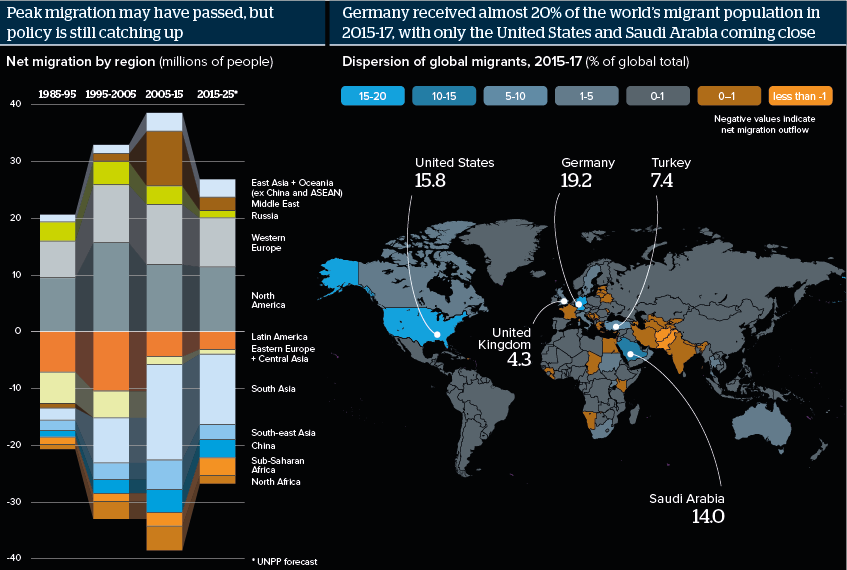Ponderous policies mean integration will lag migration
Migration will worry European Parliament election voters in May, but policy can adapt to use inbound workers effectively
Source: UN Population Prospects
Outlook
The UN reports that nearly 40 million people migrated in 2005-15, double 1985-95’s level. The UN sees migration stabilising above 25 million in 2015-25.
Asia, Africa and the Middle East’s incorporation into the global economy may have taken the world beyond peak migration, but policymakers are still adjusting. Migrants provide the skilled labour advanced countries need to offset ageing populations, but immigration vexes voters, limiting integration policies.
Last month, 164 countries formally adopted the UN Global Compact for Migration, keeping control of their migration policies but agreeing to global cooperation. The United States, Australia and Chile did not sign. Brazil withdrew. Opposition to the deal contributed to the Belgian government falling.
Impacts
- Half of US migrants came from South and Central America in 2017; only 8% of the world’s population live there, limiting future flows.
- Population growth in Africa, the Middle East and South Asia, allied with Europe’s proximity and prosperity, will drive migration to Europe.
- Without EU ‘burden sharing’ over migration, disagreements over Mediterranean search and rescue will rise.
- Moving from quotas to policies facilitating flexibility may make it easier for nations to meet labour shortages and reduce illegal flows.
